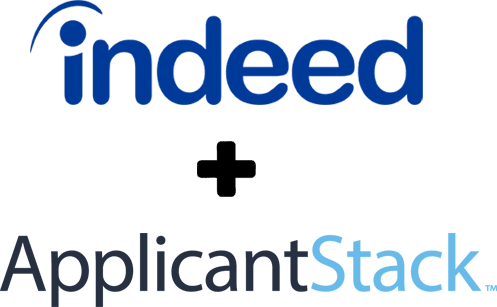In a competitive job market, standing out as an employer can make a big difference in recruiting efforts and employee retention rates. Developing an employer value proposition can help your organization present what it offers to new hires and existing members of the workforce. Explore the importance of an EVP and the benefits of developing one within your company.
What is an EVP?
An employer (or employee) value proposition, or EVP, outlines the benefits, characteristics, and offerings of an employer that are available to its employees. Its key purpose is to highlight why a jobseeker would elect to work for that organization over any other company that may be hiring for a similar position.
An effective EVP communicates what sets the organization apart as a desirable place to work, as well as how its culture and vision statement align with the values and goals of individual employees. Your company’s EVP should go beyond the monetary compensation and health benefits available to eligible employees, highlighting the unique elements that contribute to job satisfaction and the overall experience of working for your company.
The Benefits of a Solid EVP
It’s worthwhile to invest in an EVP to reap the benefits that come in the recruiting process, as well as throughout the employee lifecycle.
Attracting and retaining talent
When seeking to fill open positions, your recruiting team may soon find that it’s a highly competitive market. Jobseekers have more options, giving them more opportunities to turn down roles in favor of working for companies that better align with their personal values and goals. When you present an EVP as part of the recruiting process, a potential applicant can see what their experience might be on a day-to-day basis if they accept a role with your organization.
A more engaged team
Employee engagement is more essential than ever, as engagement rates directly correlate with employee retention and productivity numbers. Engaged team members tend to be happier in their roles, which boosts workplace morale and helps support collaborative teams. You may also see a connection between the overall health and well-being of your workforce and their engagement rates. A strong EVP can contribute to engagement.
Lower recruiting and retention costs
Finding and bringing on employees can be an expensive endeavor. The average cost-per-hire varies, depending on the organization, location, role, and process, but you can expect to spend at least a few thousand dollars on the effort. However, when your company becomes a more desirable place to work, you won’t have to invest as much effort (or money) into finding and bringing on new hires. Employees may refer their friends and family to fill open positions, which reduces the cost significantly.
Better business performance and growth
Motivated and happy employees tend to contribute innovative ideas and higher production levels, which lead to increased business growth and performance. It’s worth investing in an employer value proposition that aligns with the aims of the organization and needs of employees to achieve growth and success.
Improved transparency
When potential new hires come on board knowing what to expect in their workplace, they tend to have a better impression and overall experience. Transparency in an EVP can also establish clear expectations and encourage open communication. Companies that honor the details included in their EVPs also come across as more authentic to jobseekers and employees.
EVP vs. USP: The Differences
When discussing employer value propositions, the comparison often comes up with unique selling propositions (USP). The two share some similarities, although they have differing purposes. A USP outlines what sets an organization and its products or services apart from its competitors. It focuses more on what the business offers to its clients, rather than what’s available to employees.
EVP vs. USP: Why You Need Both for Recruiting
Understanding what a company offers to customers is an important aspect of choosing to work there. Therefore, an organization should invest time in developing both its EVP and USP to appeal to potential jobseekers who want to work for companies that align with their goals and values.
The Elements of an EVP
Some of the key components to include in an EVP include:
- Work environment and organizational culture: Highlighting the work atmosphere, including any unique factors like remote/hybrid schedules or other flexibility, collaboration opportunities, and diversity and inclusion efforts.
- Mission and purpose: Describing the purpose and mission of an organization and outlining any impact it has had on its clients, a specific group of people, or society as a whole.
- Growth and development opportunities: Outlining the opportunities available for growth and development to appeal to the large number of employees who desire to advance in their careers and develop their professional skills.
- Rewards and recognition: Demonstrating the ways in which the organization recognizes members of its workforce and rewards individual achievements and contributions.
- Benefits: Discussing the comprehensive benefits package available to eligible employees, such as retirement savings opportunities, health and wellness programs, paid time off, health insurance coverage, and any other perks.
- Compensation: Describing the financial compensation, including any pay structure, bonus opportunities, etc., available to employees.
- Work–life balance: Emphasizing ways in which the organization values a good work-life balance, such as any initiatives or policies that encourage employees to take time off, seek mental and emotional support, and spend time with their loved ones.
- Location: Outlining the physical work location, whether in-person at an office or other space, remote (from home), or another setup (hybrid schedule).
- Respect: Discussing the importance of respect in the workplace and ways in which the policies support a considerate, inclusive, and supportive atmosphere.
How to Develop (And Improve) Your EVP
If you don’t have an EVP created, now is the time to establish one. And if your organization does have one in place, check out these steps to make it even more appealing to employees and potential new hires.
Identify what is most important to provide employees
Start by getting to know your target audience, which includes the ideal candidates for open positions. Consider the skills of those who fit into that group and what they’re looking for when seeking employment. You can glean valuable information from your current team members, as well as those searching for similar positions on job boards.
Decide how you will be different
The next step in developing or improving an EVP is defining how your organization will differ from others in a similar industry or space. You might identify the unique mission or organizational cultural elements, benefits available to employees, the emphasis on a good work-life balance, or any other factors that set you apart.
Align with your company mission and values
The EVP should clearly align with the mission and values established for the business. It should reflect the identity of the business in a way that complements its aims while serving as an authentic representation of what it seeks to do.
Be authentic (and mean it)
Authenticity is vital in an EVP that resonates with employees and potential new hires. Make sure everything included in your company proposition is accurately reflected in the behaviors and actions of business leaders and team members. Be honest and transparent about what employees can expect when working for your company.
Ensure your EVP includes everyone
Inclusion is a critical aspect of a positive and supportive workplace. Make sure everyone has a place within your organization. Individuals should feel important and valued, and their contributions should be recognized.
Account for different stages of the employee lifecycle
An employer value proposition may feel like it’s mainly for new hires, but it should account for all the stages of the employee lifecycle. Consider how you can include language that appeals to those who have worked for the business for years, as well as those who are preparing to exit the workforce and move into retirement.
How to Use Your EVP to Enhance Your Employer Brand
Using your EVP can strengthen your employer brand and reputation. It helps to differentiate your organization, showcasing what’s unique about what it offers to employees. When jobseekers want to work for companies that align with their career aspirations and personal values, a well-crafted EVP can help your business stand out.
It’s also easier to attract high-quality candidates who want to be part of the team. These individuals tend to perform better and stick around longer, which contributes to overall brand success and growth. You may even find that employees who are loyal to the organization and happy in their roles can become brand advocates. Ambassadors can boost brand reputation and strengthen the appeal among potential customers or people looking to work in your industry.
Employee Value Proposition Examples
An employer value proposition should reflect the brand’s values and purpose, as well as what an employee can expect when becoming part of the team.
Nike
“Just do it. At Nike, we inspire and enable athletes of all levels to reach their full potential. Join a company that values innovation, creativity, and pushing the boundaries of what’s possible.”
Patagonia
“Build the best product, cause no unnecessary harm, use business to inspire and implement solutions to the environmental crisis. At Patagonia, you’ll be part of a purpose-driven company that’s committed to sustainability and making a positive impact on the planet.”
Strava
“You will engage in interesting and challenging work that will improve the lives of our athletes. And in the same way that Strava is deeply committed to unlocking the potential of our athletes, we are dedicated to providing a world-class workplace where our employees can grow and thrive.”
Investing in your employer value proposition is a worthwhile endeavor that can make a significant difference in your recruiting efforts and employee retention rates. Explore other tools that can simplify your hiring processes, such as software to aid in creating and sharing job postings, managing candidates, and bringing new hires onboard in a positive way.
- 3 Tips to Improve Communication with Applicants - April 26, 2024
- Understanding Contract-To-Hire and How It Works - April 23, 2024
- Should Your Job Listings Include Salary Information? - April 19, 2024











